After leaving Alton, we cruised by some river sights and at least got to see St. Louis from the river.
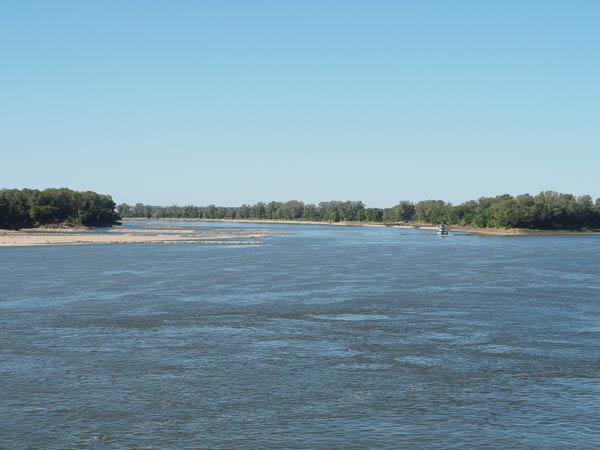
Not long after we left Alton, we passed the confluence of the Missouri with the Mississippi. Low water in the Missouri is painfully evident.
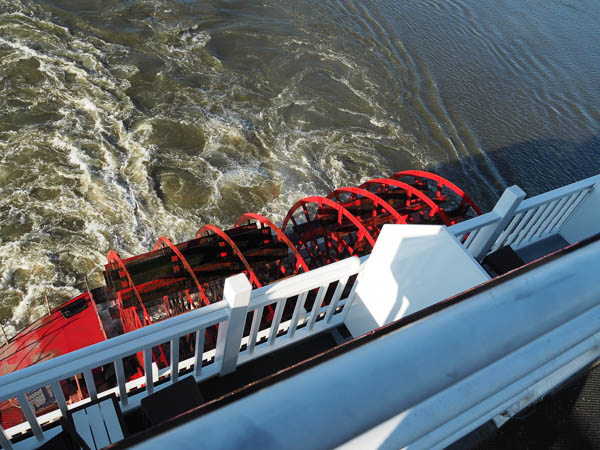
Although the American Duchess is powered by engines with standard screw propellers, it also has a pair of functional stern wheels. When the trip started the paddleboards were already a bit beat-up. By the time we powered up the increasingly shallow river after our stop in Tunica, there were entire segments missing! Other broken boards were barely attached and banging with every rotation.
One of the Road Scholar couples had a stateroom directly over the paddlewheels. They complained throughout the trip about the noise. It must have been really bad with the increased banging.
When asked, the Riverlorian said that the paddleboards were designed to fail if they became entangled with a snag or a bar. Otherwise the engines might be damaged.
We wonder how they manage to fix the broken boards in the middle of the cruising season.
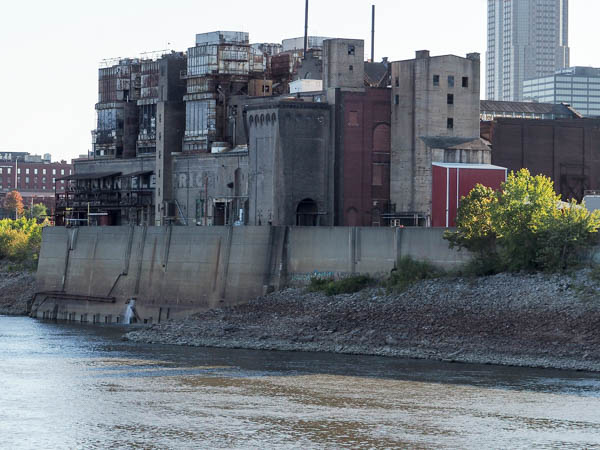
As we neared downtown St. Louis we passed the Ashley Street Power House. Its river side looks like Dr. Frankenstein's nightmare of a medieval fortress. As one site describes it: "An enormously-scaled generating station, whose Classical detailing stands in surreal contrast to the rusting industrial accoutrements projecting beyond its pilasters and false pediments."
The plant was built in 1904 to provide steam power to downtown St. Louis. It has been converted from coal to oil to natural gas and is still in operation.
From the street the view is more pleasing. The discussion at the link is relevant to the decision not to stop at St. Louis. Yes, the water is low, but fear of crime was a major part of the decision. Maybe the actual incidence of crime is not as bad as the perception. In any event, we didn't find out one way or the other.
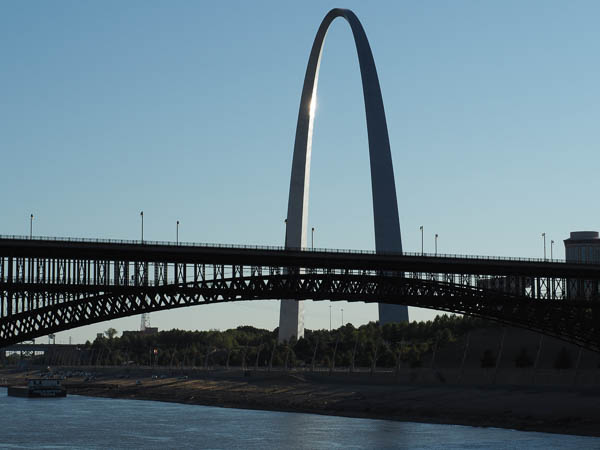
The Eads Bridge, just before the arch, is still used.
James Eads was a self-taught man whose life story might have been written by Horatio Alger. He became one of the most influential river men of his time. As such he crossed swords with Andrew Humphreys, chief of the Army Corps of Engineers. The two men had differing visions of how to harness and manage the Mississippi River and their rivalry was both intense and personal.
(Spoiler alert: Eads has been proven right.)
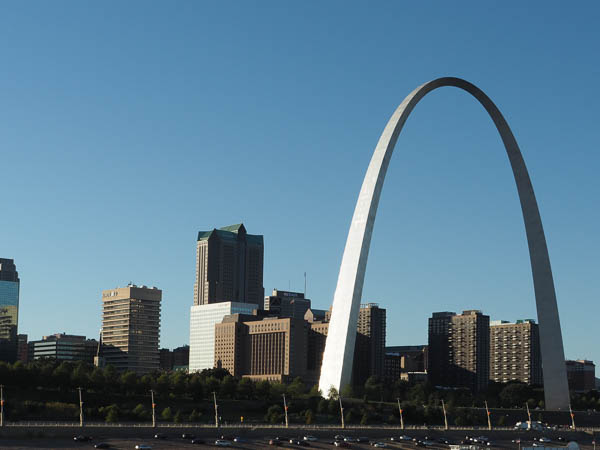
The blow of not being able to stop in St. Louis was softened somewhat by a fellow-traveler's assertion that tickets to ride up the arch had to be purchased far in advance. We hadn't done so, but investigations after reaching home indicates that tickets are readily available.
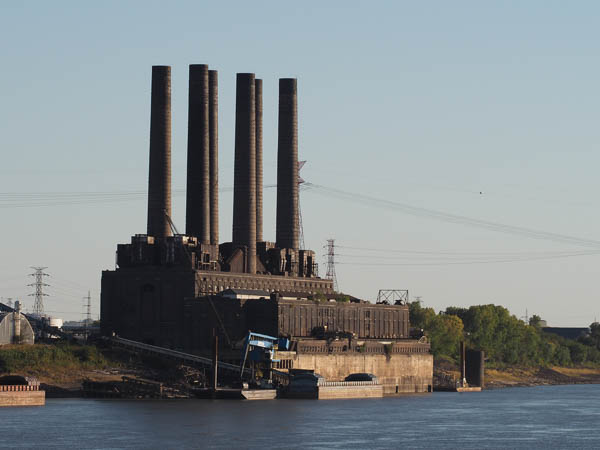
Downriver from the city center we passed the now-decommissioned Cahokia plant. When it was built in 1926, it was the largest power producer in the Mississippi Valley.
One of our fellow Road Scholars commented that he had expected the river banks to be heavily industrialized throughout our travels, but in fact cities and industrial sights were the exception.
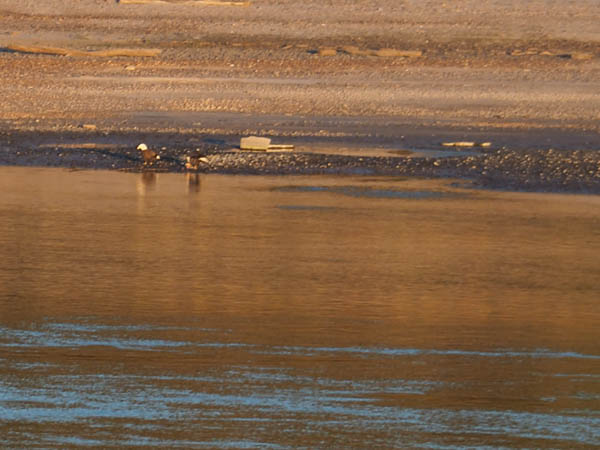
That evening we passed this pair of eagles scrounging along the river's edge. I had hoped to see many more on our travels, but this was it.
Click your "back" button to return to the previous page or click for our picture album.